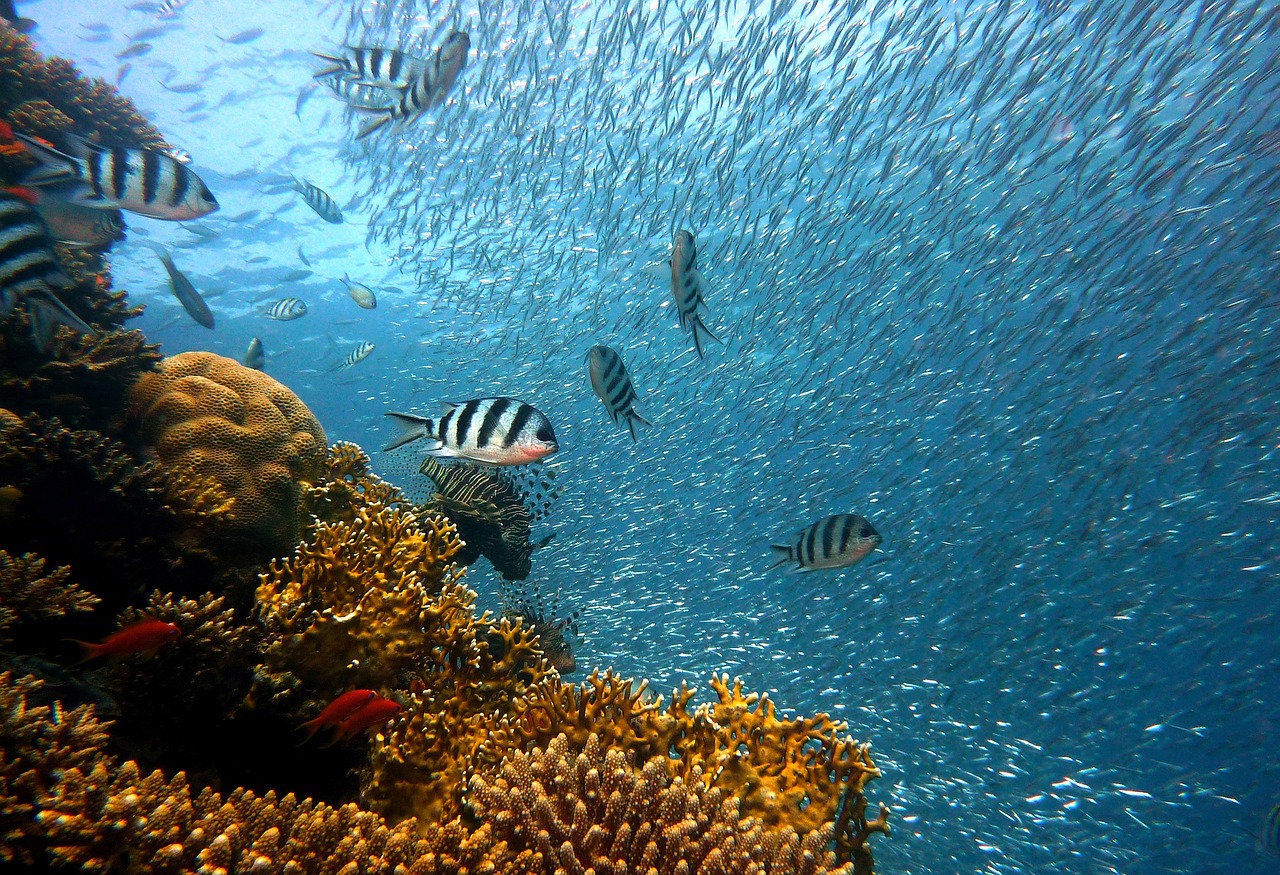Marine protected areas have to protect people and fish
Marine protected areas (MPAs) have been the subject of much interest over the past two decades, but the actual size and number of MPAs have remained modest. Currently, 18,400 MPAs cover roughly eight per cent of oceans and yet, fewer than two per cent of these regions are designated no-take areas. This leaves much of the ocean vulnerable to overfishing, creating ecological consequences and socio-economic repercussions for those dependent on marine reserves.
Local communities, nations, and international organizations have been calling for change, with new conservation targets being set for the full protection of at least 10 per cent of the world’s marine and coastal ecosystems. However, MPAs must be carefully designed using ecosystem approaches that incorporate fully and partially protected areas without interfering with the right to fish for those whose livelihoods are dependent on access to marine areas and fish stock.
In a study published in Ecological Modelling, researchers used a dynamic game-theoretic model to explore the impact of designated no-take marine reserves on fish stock and fishing strategies. They found that optimal design can be achieved through a combination of three different marine zones (open access fisheries, MPAs, fish banks). Unique combinations will allow environmentally friendly habitats for fish while maintaining the financial stability of fishers.
The study’s authors, Dr. Rashid Sumaila and Dr. Ilyass Dahmouni from the University of British Columbia’s Institute for the Oceans and Fisheries, speak on this topic.
What are some of the highlights of this paper?
Dahmouni: In this paper, we consider a fishery with three different management regions, i.e., an open access region, a marine protected area (MPA) and an exclusively no-take marine region (or fish bank). By deriving the solutions (i.e., fishing strategies) used by fishers when they opt either for cooperation, non-cooperation (Nash), or sub-cooperation (Cartel), we show that the combination of these three areas promotes resource sustainability and fishers’ livelihoods.

Dr. Ilyass Dahmouni
Two important facts are worth highlighting. First, restricting part of the marine area to fishing will not represent a loss of profits for fishers; on the contrary, they will see their earnings increase significantly due to the spillover effect. Second, in order to achieve this outcome, there must be an optimal size for the fish bank, which will not result in an improvement if it is exceeded. In other words, policymakers will need to consider the size of the three regions, as well as the weight they place on future generations (via the discount factor) and the biological characteristics of the species (e.g., reproduction and migration rates between the three regions) to determine the best size (and location) of the fish bank.
What are open access fisheries, marine protected areas, and fish banks?
Dahmouni: Any marine area can be categorized in one of these three forms. Open-access fisheries and fish banks are the two extreme cases, while an MPA lies somewhere in between. An open-access fishery is a marine area where anyone wishing to fish is welcome, and where no regulations are set regarding fishing effort (e.g. number of vessels in the fleet, type of engine, number of hours spent on the waters); for obvious reasons, this is the most damaging type of fishing.
A marine protected area can, however, take different forms depending on the regulations that limit fishing activity (fishing permits, quotas, moratorium seasons, indigenous rights, fish size, etc.).
Finally, fish banks have the simplest definition to understand: they are simply marine reserves where no fishing activity is authorized. This gives fish a marine sanctuary where they can migrate, reproduce, and grow in peace and quiet, far from nets and engines.
What should we know about MPAs?
Dahmouni: We would like to draw people’s attention to the fact that MPAs are as important as a pedestrian zone or a sidewalk. As simple as the idea of a part of the street being off-limits to motorized vehicles, the ocean will need more MPAs to combat destructive fishing. Instead of directly subsidizing fishers and helping them deplete stocks, perhaps we could invest these funds in the design, monitoring and safeguarding of MPAs. Soon, everyone would see more benefits and realize that it’s the right thing to do.
As an economist, I would like to say that more needs to be done in this respect and that we can only achieve the ideal state by examining all possible options and choosing the best one. For example, giving up some of today’s benefits will enable us to gain more in the future. At this point, let me underline the impatience of some political decision-makers to want immediate results.
Finally, the world is changing, and more and more countries are committing themselves to environmental protection, notably by signing up for the United Nations’ Sustainable Development Goals. In this paper, we have argued that solving these problems will improve life below water while helping to tackle poverty and hunger across the globe.
Why are MPAs so important?

Dr. Rashid Sumaila
We are jeopardizing the ocean through overfishing, habitat destruction, the provision of harmful subsidies, illegal fishing, and a lack of effective management. When fish are depleted the people most affected are Indigenous, small-scale, developing coastal community fishers who cannot just pack up their operations and go to fishing grounds other than theirs. Not creating MPAs may make developing countries lose the benefits they derive from them. Livelihoods and different cultures benefit from healthy oceans teeming with life, and when are benefited by involving the fishing communities adjacent to a planned MPA right from the design to implementation and management.
A dynamic game model for no-take marine reserves was published in Ecological Modelling
Tags: faculty, Ilyass Dahmouni, IOF postdoctoral fellows, Marine protected areas, MPAs, ocean protection, overfishing, Rashid Sumaila, Research
